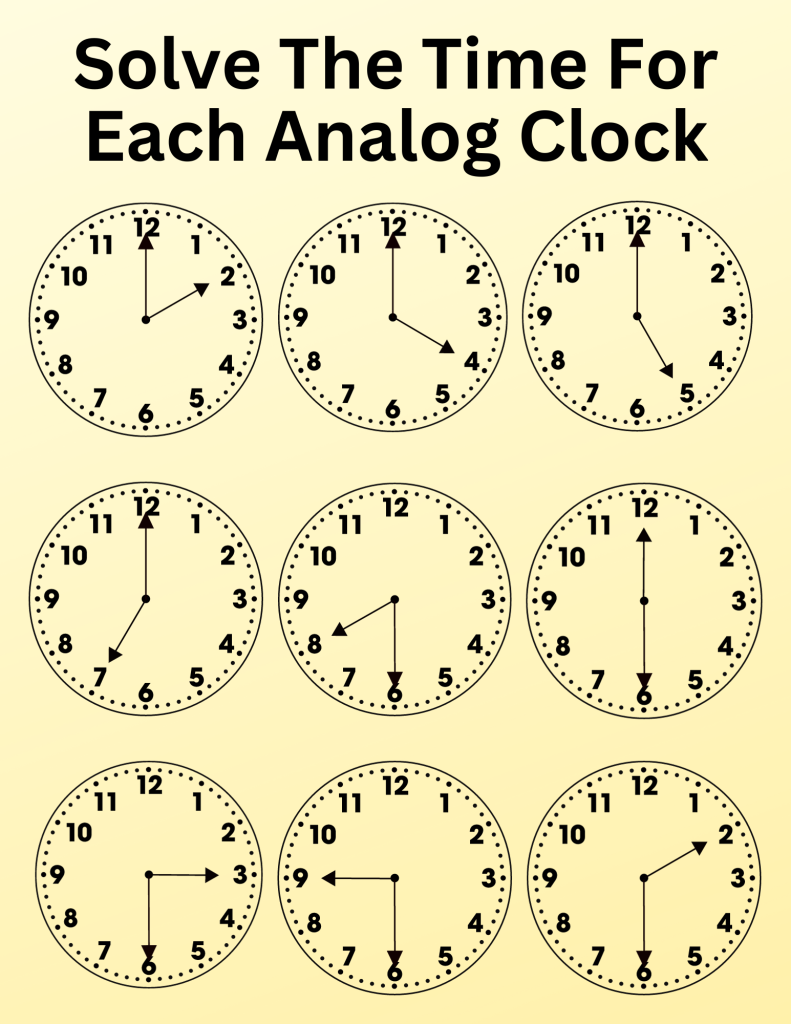How To Teach Kids To Learn To Tell The Time
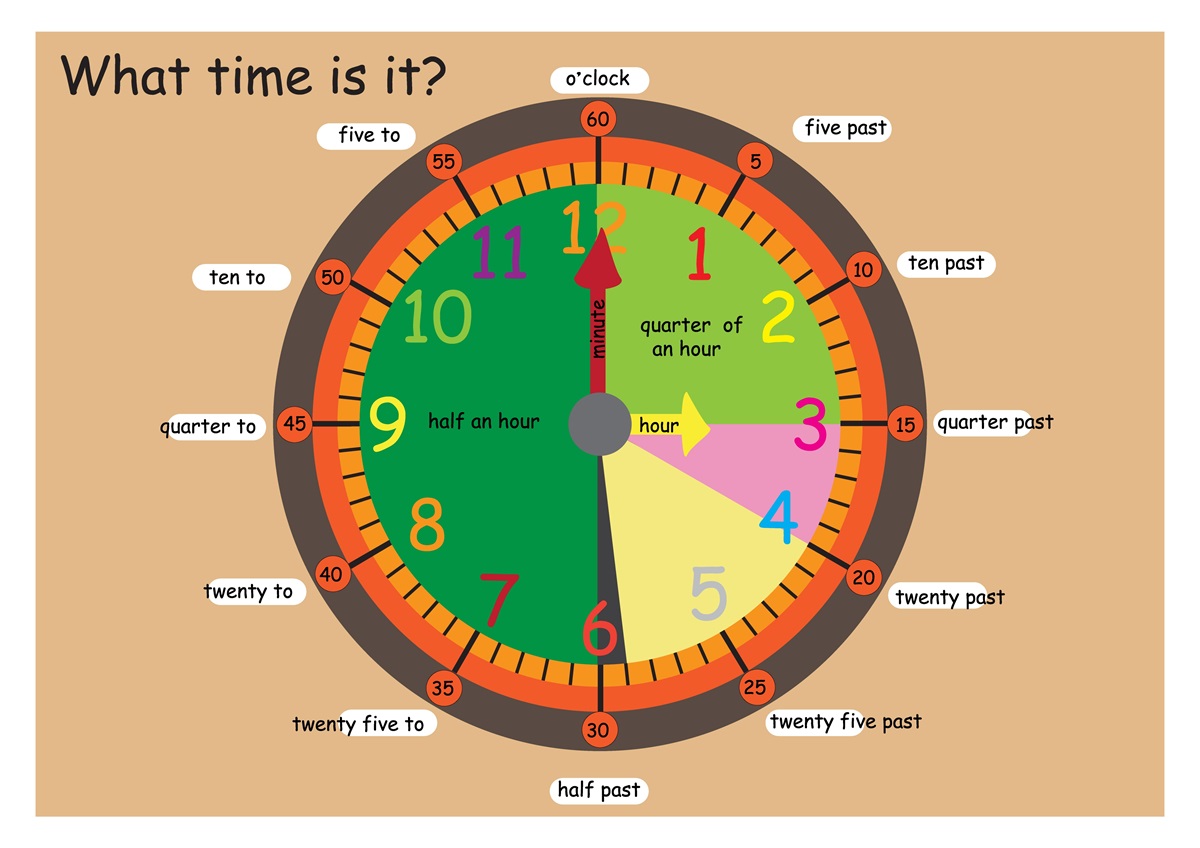
Learning to tell time is an important skill for children, as it helps them develop a sense of time management and responsibility. By understanding how to read a clock, kids can learn to plan their day effectively and be punctual for important events. Additionally, knowing how to tell time allows children to follow schedules, complete tasks on time, and develop a sense of routine. This skill is crucial for their academic success and future endeavors. It is important for parents and educators to prioritize teaching kids how to tell time to equip them with this fundamental life skill.
Download Our Time-Telling Printable PDF For Kids
Below, we put together all of our resources in this blog post into 1 PDF that you can download here: https://brickpop.com/wp-content/uploads/2023/11/Telling-Time-Worksheet-Prinatable-For-Kids.pdf
How To Tell The Time Printable Worksheets
Click on each image below to see the full-size image.
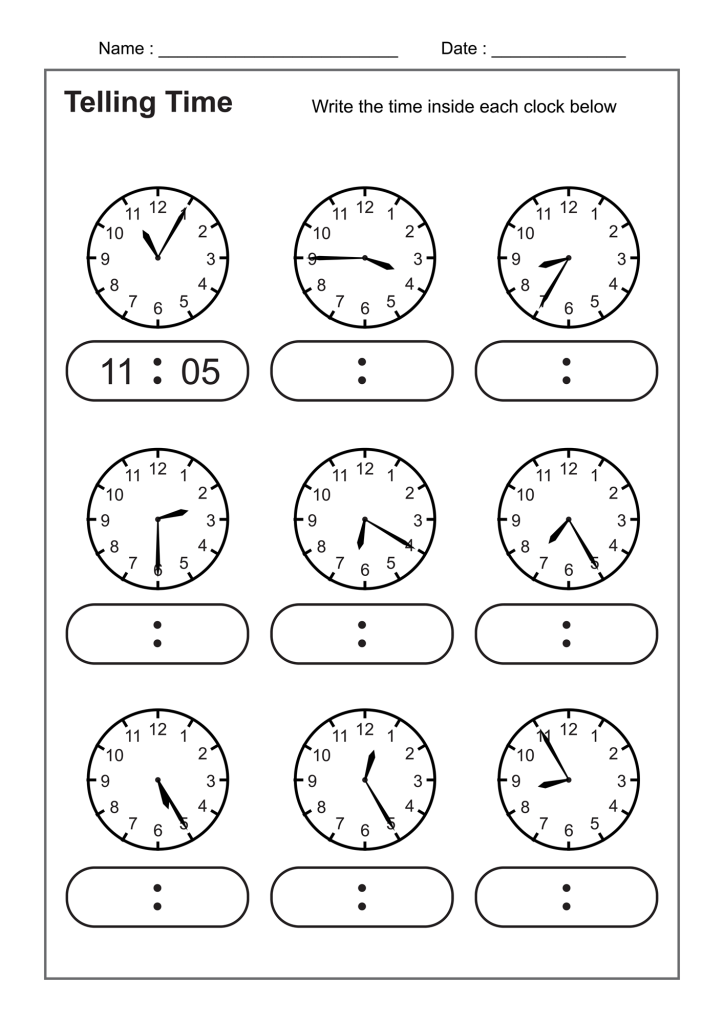
What Age Should Kids Learn How To Tell Time
Kids are going to learn how to tell time and understand how timing and scheduling actually work at different ages. The ages below are a good guideline for teaching.
Age 4: You can start teaching kids about time and the concepts of nighttime and daytime.
Age 5: You can start teaching kids how to read a clock and help them understand what time is.
Age 6: You can get kids to master telling time and understand the times they do certain things.
Learning to tell time is an important skill that kids should start developing at a young age. By the age of five, children can begin to understand the concept of time and learn to read a clock. It is during this stage that they can grasp the basic concepts of hours, minutes, and the difference between AM and PM. Starting early allows children to build a strong foundation in time-telling skills, which will benefit them as they grow older and become more independent.

Benefits Of Teaching Kids How To Tell Time
Teaching kids to tell time has numerous benefits. Time-telling skills are essential for daily life and help children develop a sense of structure and routine. By learning to read clocks, kids improve their mathematical skills as they understand concepts like hours, minutes, and seconds.
Here are some of the main benefits:
- Develops essential life skills for daily routines and scheduling
- Improves mathematical skills through learning about hours, minutes, seconds
- Enhances problem-solving abilities and critical thinking
- Promotes independence and responsibility with managing schedules
- Helps children learn to be punctual
- Provides a sense of structure and routine
- Boosts focus and concentration required to read clocks
- Builds a foundation for other time-related skills like tracking passing time
- Allows kids to manage their own time for homework, play, chores
- Prepares children for timed activities like sports games, cooking, tests
- Helps kids understand the cyclical nature of time units like days, weeks
Understanding the Clock
Parts Of A Clock
A clock consists of several essential parts that work together to display the time. The main parts of an analog clock include the dial, which is divided into hours, minutes, and sometimes seconds. The hour hand indicates the current hour, while the minute hand shows the minutes. Some clocks also have a second hand that displays the seconds. The clock face is the surface where the numbers or markings are located. It provides a reference for reading the time. Understanding the different parts of a clock is crucial for kids to learn how to tell time accurately.
Different Types Of Clocks
There are several types of clocks that children can learn to tell time on. These include analog clocks, digital clocks, and 24-hour clocks. Analog clocks have a traditional clock face with hour and minute hands, while digital clocks display the time in numbers. 24-hour clocks are used to represent time in a 24-hour format, where the day is divided into 24 equal parts. Each type of clock has its own unique way of representing time, and it’s important for children to be familiar with all three types to develop a well-rounded understanding of time-telling.
How To Read An Analog Clock
Reading an analog clock is an essential skill for kids to learn. It helps them understand the concept of time and develop their time-telling abilities. To read an analog clock, kids need to identify the different parts of the clock, such as the hour hand, minute hand, and second hand. The graphic below will be very helpful for children.
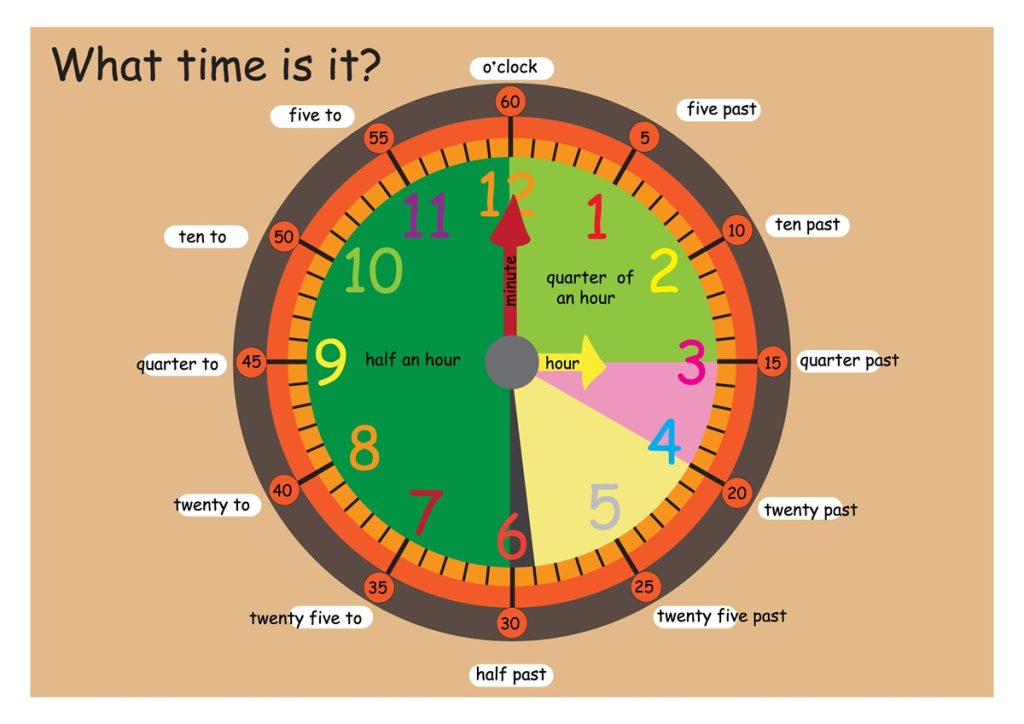
They also need to understand how to count the hours and minutes marked on the clock face. By practicing reading analog clocks, kids can improve their ability to tell time accurately. It is important for parents and educators to provide opportunities for kids to practice reading analog clocks through worksheets, educational games, and real-life situations. This will reinforce their understanding and make time-telling a practical skill they can use in their daily lives.
Tips for parents and educators To Help Teach Kids How To Tell Time
Parents and educators play a crucial role in helping children learn how to tell time. Here are some tips to facilitate their learning process:
- Create a daily routine: Incorporate time-telling activities into your child’s daily routine, such as setting a schedule and using clocks.
- Use visual aids: Provide visual aids, like analog clocks and digital clocks, to help children understand the concept of time.
- Make it fun: Engage children in interactive activities, such as playing time-telling games and using worksheets, to make learning enjoyable.
- Real-life application: Encourage children to apply their time-telling skills in real-life situations, such as planning activities and managing their own time.
How To Tell Hours And Minutes
Once kids have a basic understanding of numbers, they can start learning to identify hours and minutes on a clock. This involves recognizing the numbers on the clock face and understanding their corresponding positions. It is important to teach kids that the hour hand points to the hour while the minute hand points to the minutes. By practicing this skill, kids can develop a sense of time and learn to read the clock accurately.
Understanding The Concept Of AM And PM
Understanding the concept of AM and PM is crucial for kids when learning to tell time. AM stands for ante meridiem, which means before noon, while PM stands for post meridiem, which means after noon. It is important for kids to grasp the difference between AM and PM as it determines whether it is morning or afternoon. A helpful way to explain this concept is by using a table that shows the hours in a day divided into AM and PM. This visual aid can assist kids in associating specific times with the correct period of the day.
How Kids Can Learn To Read Digital Clocks
Digital clocks display the time using numbers, making it easier for children to understand and read the time accurately. To read a digital clock, kids need to identify the hours and minutes displayed. They can also learn about the concepts of AM and PM by observing the time displayed on digital clocks. Practicing reading digital clocks can be done through worksheets and exercises where kids can match the digital time with the corresponding analog clock. Educational games and real-life practice can also help reinforce this skill. By mastering the art of reading digital clocks, kids will be better equipped to manage their time effectively and stay punctual.
Practicing Time-telling Skills
Use Time-Telling worksheets and exercises
You can click on each image below for the full-size image.
One effective way to help kids learn how to tell time is by using worksheets and exercises. These resources provide structured practice and reinforcement of time-telling skills. Worksheets can include activities such as matching analog and digital clocks, filling in missing numbers on a clock face, and solving time-related word problems. Exercises can involve setting and reading clocks to specific times, calculating elapsed time, and sequencing events in chronological order. By engaging in these activities, children can develop their understanding of time and enhance their ability to read clocks accurately.
Playing educational Time games
Playing educational games is a fun and interactive way for kids to learn how to tell time. There are numerous online games and mobile apps available that can help children practice their time-telling skills. These games often include activities such as matching digital and analog clocks, setting the correct time on a clock, and solving time-related puzzles. By engaging in these games, children can enhance their understanding of the concept of time and improve their ability to read and interpret clocks. Additionally, playing educational games can make the learning process enjoyable and motivate kids to continue practicing their time-telling skills.
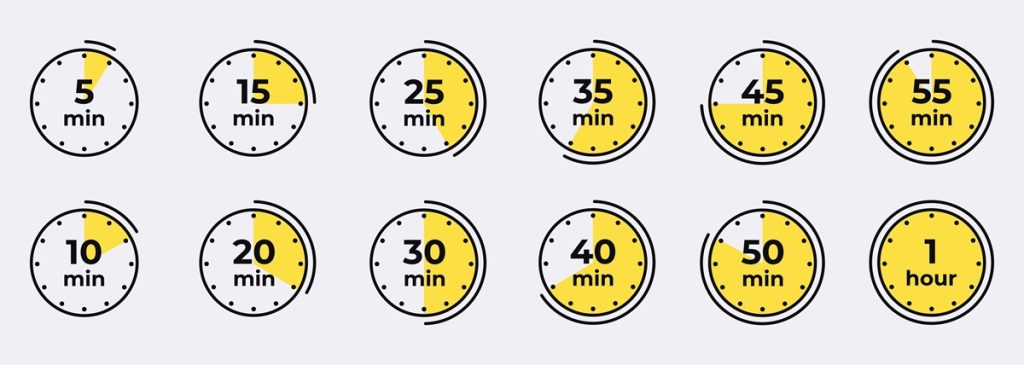
Real-life Time-Telling practice and applying Time to The Real World
Real-life practice and application are essential for kids to fully grasp the concept of telling time. By incorporating daily routines and activities that involve time, such as setting the table for dinner or scheduling playdates, children can develop a practical understanding of how time works. Additionally, parents and educators can encourage time-related conversations and provide opportunities for kids to use their time-telling skills in real-life situations. This hands-on approach not only reinforces what they have learned but also helps them see the relevance and importance of telling time in their everyday lives.
Final Takeaways
- Time-telling skills provide structure and routine for kids by helping them understand time and scheduling. Learning to tell time is an essential life skill.
- Telling time improves math abilities as children learn about hours, minutes, and seconds. It enhances critical thinking and problem-solving skills too.
- Being able to read clocks boosts independence and responsibility in kids. They learn to manage schedules, plan tasks, and be punctual.
- Consistent practice using time-telling worksheets, games, and real-life activities reinforces time-telling concepts. Provide support and help educate when your child gets stick.
- Learning to tell time is a milestone that paves the way for ongoing math learning and responsibility. Give your kids plenty of encouragement as they master this skill.




